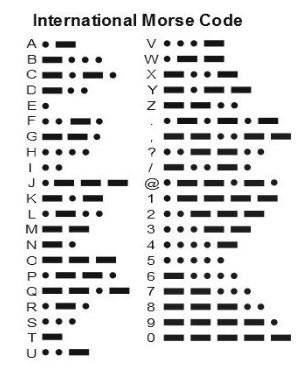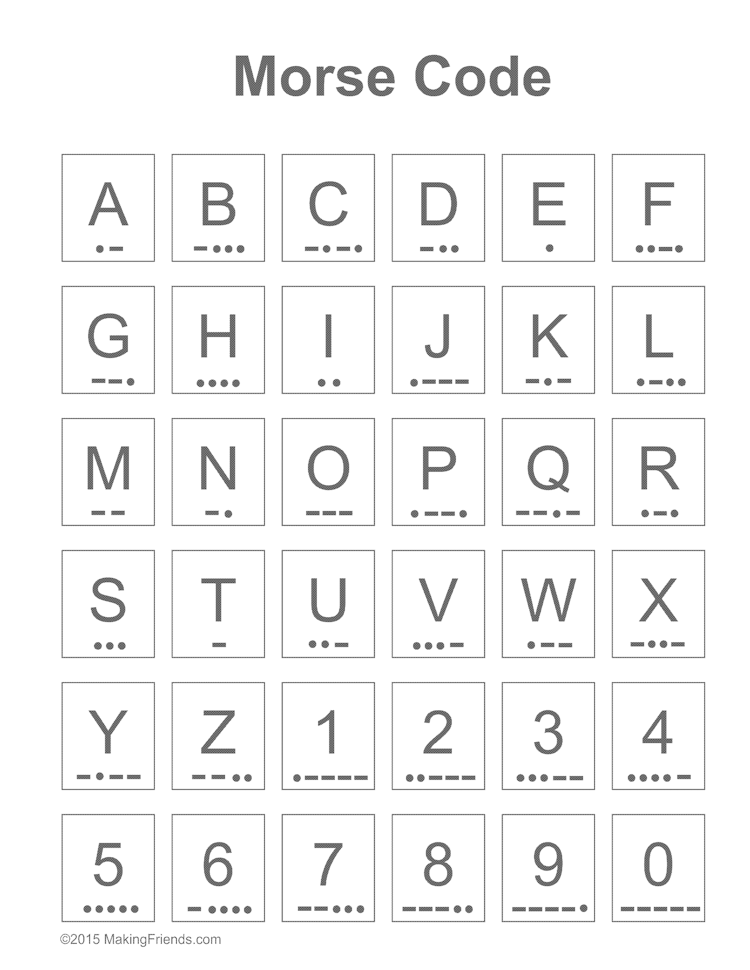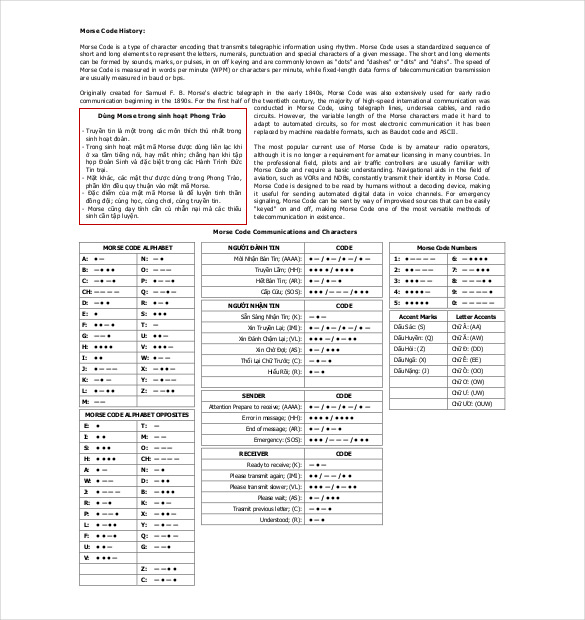In today’s digital age, where communication is primarily done through text messages, emails, and social media posts, we often forget about the fascinating history of communication methods that were used in the past. One such method that has intrigued people for centuries is Morse Code.
Morse Code: A Brief Overview
 Morse Code is a system of communication that uses a series of dots and dashes to represent letters and numbers. It was developed in the early 19th century by Samuel Morse and Alfred Vail. Initially used for telegraphy, Morse Code revolutionized long-distance communication and played a significant role in various industries, including the military, aviation, and maritime.
Morse Code is a system of communication that uses a series of dots and dashes to represent letters and numbers. It was developed in the early 19th century by Samuel Morse and Alfred Vail. Initially used for telegraphy, Morse Code revolutionized long-distance communication and played a significant role in various industries, including the military, aviation, and maritime.
The system is based on a simple concept - each letter and number is represented by a unique combination of short and long signals. The dots denote short signals, while the dashes represent long signals. These signals are transmitted through sound, light, or electrical pulses.
The Benefits of Morse Code
 While Morse Code may seem outdated in today’s technology-driven world, it still has some important benefits. One of the key advantages is its simplicity. Morse Code allows for effective communication using just two signals - dots and dashes. This simplicity makes it easily interpretable, even in noisy or challenging environments.
While Morse Code may seem outdated in today’s technology-driven world, it still has some important benefits. One of the key advantages is its simplicity. Morse Code allows for effective communication using just two signals - dots and dashes. This simplicity makes it easily interpretable, even in noisy or challenging environments.
Morse Code also has a very high level of reliability. Unlike modern communication methods that rely on the internet or cell tower signals, Morse Code can be transmitted using various mediums, including radio waves and light signals. This versatility makes it useful in situations where other forms of communication may be unavailable or unreliable.
The Fascinating History of Morse Code
 Morse Code was first invented in the early 1830s by Samuel Morse and Alfred Vail. The development of this code was closely tied to the invention of the telegraph, a device that allowed for long-distance communication using electrical signals.
Morse Code was first invented in the early 1830s by Samuel Morse and Alfred Vail. The development of this code was closely tied to the invention of the telegraph, a device that allowed for long-distance communication using electrical signals.
Samuel Morse, an American inventor and painter, joined forces with Alfred Vail, a skilled machinist, to develop a practical telegraph system. They soon realized the need for a standardized code that could efficiently transmit messages over long distances. Thus, the Morse Code was born.
The first public demonstration of the telegraph using Morse Code took place in 1838, and it quickly gained popularity due to its simplicity and effectiveness. Morse Code was officially adopted as the international standard for telegraphy in 1865.
Unlocking the Secrets of Morse Code
 While Morse Code may seem like a complex system of dots and dashes, learning to decode and encode messages in this code is actually quite straightforward. The system consists of two main components - the alphabet and the numbers.
While Morse Code may seem like a complex system of dots and dashes, learning to decode and encode messages in this code is actually quite straightforward. The system consists of two main components - the alphabet and the numbers.
The Morse Code alphabet consists of letters A to Z, each represented by a unique combination of dots and dashes. For example, the letter S is represented by three short signals, while the letter O is represented by three long signals.
In addition to the alphabet, there are also Morse Code signals for numbers, punctuation marks, and special characters. These signals allow for the transmission of a wide range of messages using the limited set of dots and dashes.
Exploring Morse Code Today
 While Morse Code is no longer widely used for everyday communication, it still holds a special place in the hearts of many enthusiasts. There are various communities and organizations dedicated to preserving and promoting the use of Morse Code.
While Morse Code is no longer widely used for everyday communication, it still holds a special place in the hearts of many enthusiasts. There are various communities and organizations dedicated to preserving and promoting the use of Morse Code.
Amateur radio operators often learn Morse Code as part of their training and use it as a unique way to communicate with fellow enthusiasts around the world. Morse Code is also still used by the military and some aviation and maritime organizations as a backup communication method.
Learning Morse Code
 If you’re interested in learning Morse Code, there are plenty of resources available to help you get started. Online tutorials, mobile apps, and even printable charts can assist you in mastering this fascinating communication method.
If you’re interested in learning Morse Code, there are plenty of resources available to help you get started. Online tutorials, mobile apps, and even printable charts can assist you in mastering this fascinating communication method.
By taking the time to learn Morse Code, you gain a deeper appreciation for the history of communication and the ingenuity of those who developed these early systems. Whether you choose to use it for practical purposes or simply for fun, Morse Code is an excellent skill to have in your repertoire.
Conclusion: Embracing the Past
 As we continue to embrace modern communication methods, it’s essential to remember and appreciate the technologies that paved the way for our digital world. Morse Code not only revolutionized long-distance communication but also sparked advancements in the fields of electronics and telecommunications. Its legacy lives on, and its influence can still be felt today.
As we continue to embrace modern communication methods, it’s essential to remember and appreciate the technologies that paved the way for our digital world. Morse Code not only revolutionized long-distance communication but also sparked advancements in the fields of electronics and telecommunications. Its legacy lives on, and its influence can still be felt today.
So take a moment to delve into the world of Morse Code, decode some messages, and marvel at the brilliance of a system that bridged distances and connected people in a time before smartphones and the internet. Morse Code may have faded into the background, but its impact remains significant.
Remember, learning Morse Code is not just about memorizing dots and dashes; it’s about embracing the history and appreciating the ingenuity of our predecessors. So grab a chart, start practicing, and embark on a journey that will unlock the secrets of one of the most remarkable communication methods ever created.